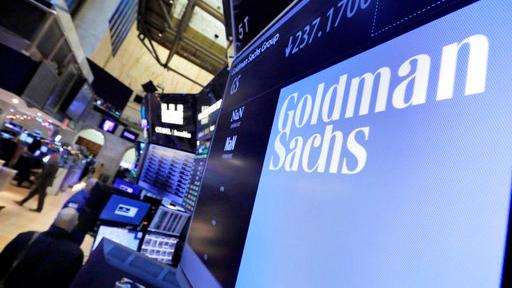Wall Street giant Goldman Sachs seeks to reinvent itself as earnings slow
Goldman Sachs, a decade after the financial crisis, is in the midst of a transformation, pivoting to middle-market deals as megamergers become rarer and expanding into the highly competitive consumer lending sector as trading revenue slows.
Launched 150 years ago, the New York City firm has become synonymous with Wall Street after historically earning the bulk of its profits from investment banking and the capital markets, advising companies on some of the largest transactions of the past century and guiding top U.S. corporations as they seek to trade publicly on the top equity exchanges.
But executives are under pressure to find new opportunities as sell-side investment profits slow dramatically and market volatility undercuts its core businesses, ultimately weighing on earnings.
“We are on an evolutionary path. Our new investments will generate results over time, and will be complementary to our long-standing core business, which we will continue to strengthen,” CEO David Solomon told investors on Monday.
The firm is hoping that the years spent managing assets for wealthy Americans will give it an advantage.
Goldman Sachs, for example, currently provides financial counseling through its Ayco service to many of the top 100 U.S. businesses. The existing relationships on that platform and others could serve as a recruiting tool to gain new consumer clients, both from the C-Suite and a company’s broader workforce. The strategy for that, however, is still under development, according to CFO Stephen Scherr.
The bank also thinks it has an edge over lenders like Chase and Wells Fargo that are saddled with legacy systems that can make it more difficult to implement new technology, as well as vast physical footprints that weigh on margins.
Instead, it’s relying on digital outreach rather than retail branches to draw new customers. The lack of brick-and-mortar stores, analysts say, will also allow Goldman Sachs to offer clients higher interest rates.
“They don’t have an existing business, they don’t have an existing customer base in most of the areas they are evolving towards,” Devin Ryan, managing director at JMP Securities, told FOX Business. “On the other hand, there are some big advantages. They can build from scratch based on where the business is going…they can disrupt or try to disrupt some of the competitors around pricing, client acquisition.”
Others were split on whether Goldman Sach’s significant undertaking would be successful given the already intense competition posed by rivals like JPMorgan Chase, Wells Fargo and Bank of America.
“It’s building a bank and it’s going to take years for that bank to show the profits that it would like,” said Odeon Capital Group senior research analyst Dick Bove.
| Ticker | Security | Last | Change | Change % |
|---|---|---|---|---|
| GS | THE GOLDMAN SACHS GROUP INC. | 953.30 | +10.23 | +1.08% |
| JMP | NO DATA AVAILABLE | - | - | - |
| WFC | WELLS FARGO & CO. | 86.14 | -0.52 | -0.60% |
| BAC | BANK OF AMERICA CORP. | 52.09 | -0.02 | -0.04% |
Goldman is not expecting to be the dominant player in the industry, at least not anytime soon.
Instead, the company is aiming to disrupt aspects of the consumer lending market where customers are currently experiencing “pain-points.” It partnered with Apple on a new credit card, for example, that is entirely digital – though some of its own employees are skeptical of how successful the endeavor will be.
Investors will have to wait years for any sort of resolution, as executives say the bank will take a measured approach to the shift.
“As we graduate down the slope of the curve of the balance sheet investing, we're mindful of the curve of taking up third party assets and the revenue generated from it,” Solomon said on the firm’s earnings call on Monday. “We're looking to build value over the next three to five years, not over the next couple of quarters.”
Among the most significant of the new initiatives is Goldman Sach’s foray into the consumer market. Launched by former CEO Lloyd Blankfein in 2016, Marcus is the firm’s first online retail bank that aims to tap into potentially $4 trillion in deposits and the $9 trillion wealth management business. The bank has spent roughly $1 billion on the platform.
Goldman Sachs also purchased Clarity Money, a personal financial application that it is currently integrating into its consumer operations.
Outside of lending, the company is also trying to pivot away from megamergers in the high billions of dollars, instead launching a new effort with 100 investment bankers to capture middle-market deals with firms smaller than $2 billion.
It’s conducting a strategic review of its entire operations, but does not expect to provide an update to investors until the first quarter of 2020 – a timeline that some analysts immediately questioned.
“There was a little bit of disappointment in the timeframe of getting a more wholesome strategic outlook,” Ryan said. “The market does want more.”
CLICK HERE TO GET THE FOX BUSINESS APP
On top of its new endeavors, Goldman Sachs is trying to recover from the latest scandal involving the misuse of a Malaysian government investment fund, called the 1Malaysia Development Berhad fund or 1MDB.
Solomon declined to discuss timing for the resolution of litigation on the issue on Monday.




















